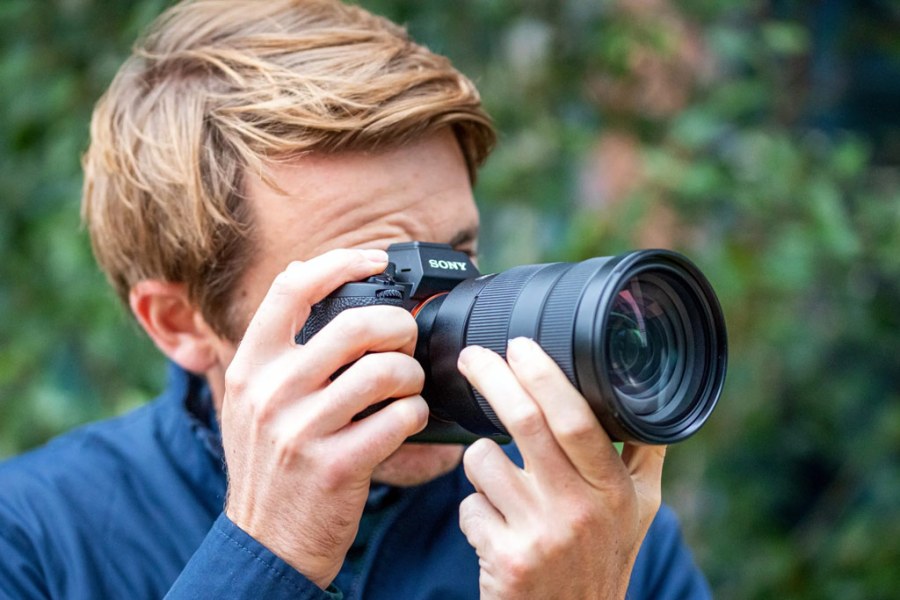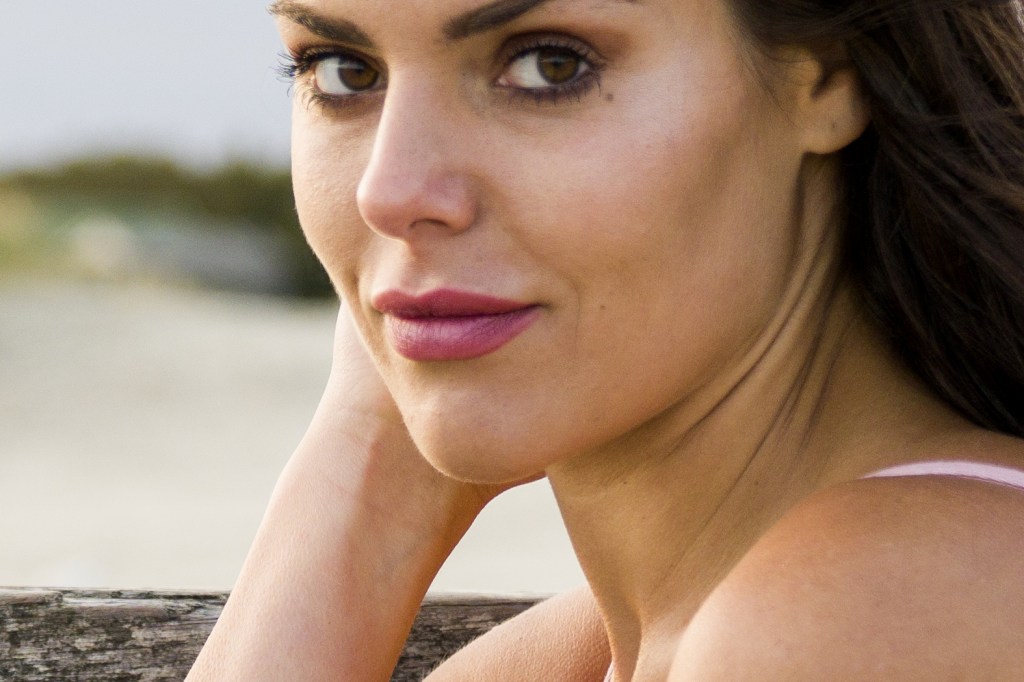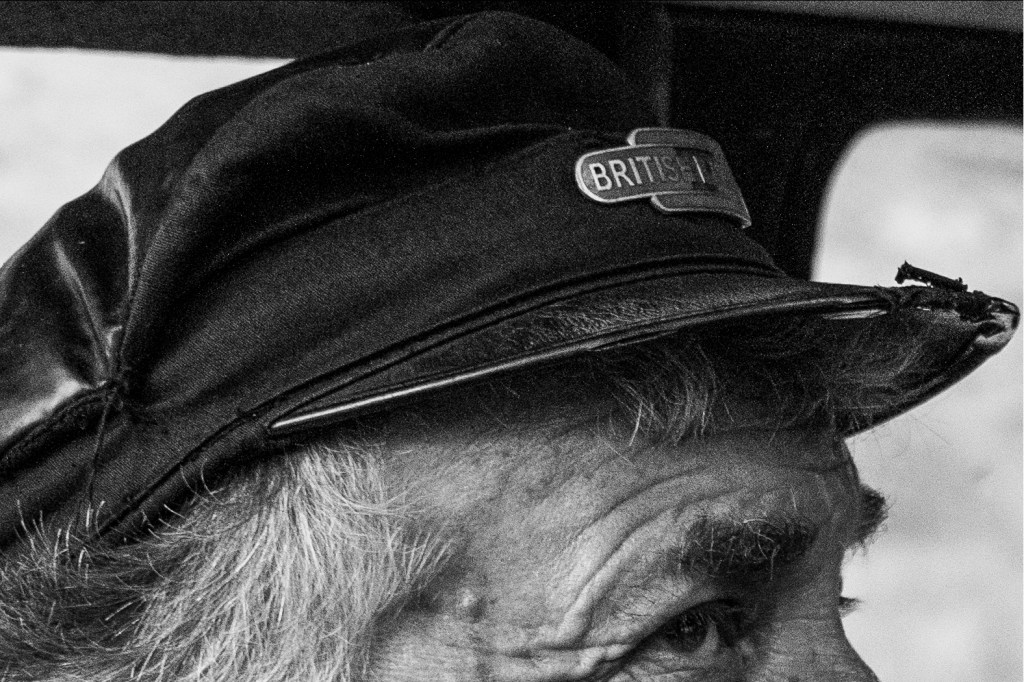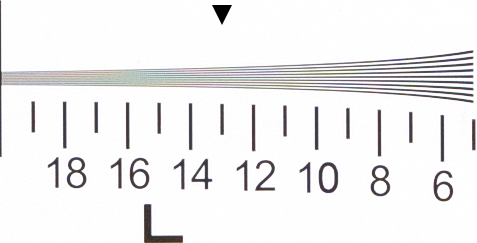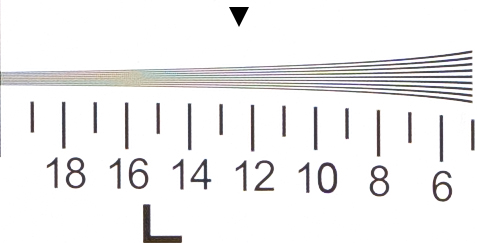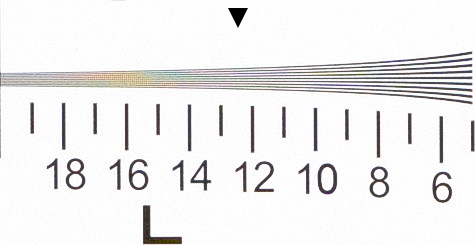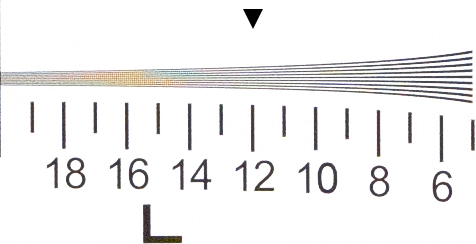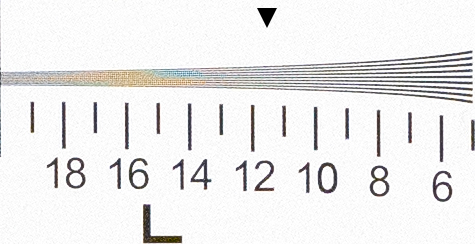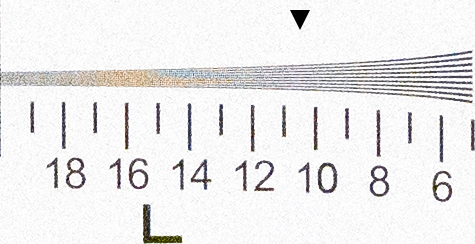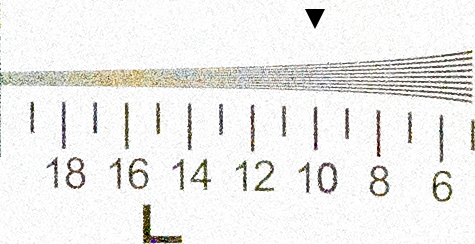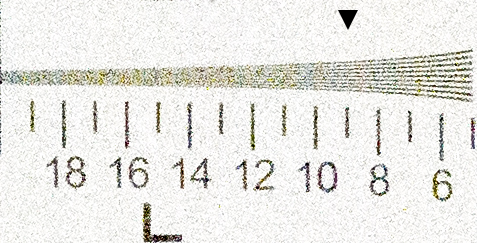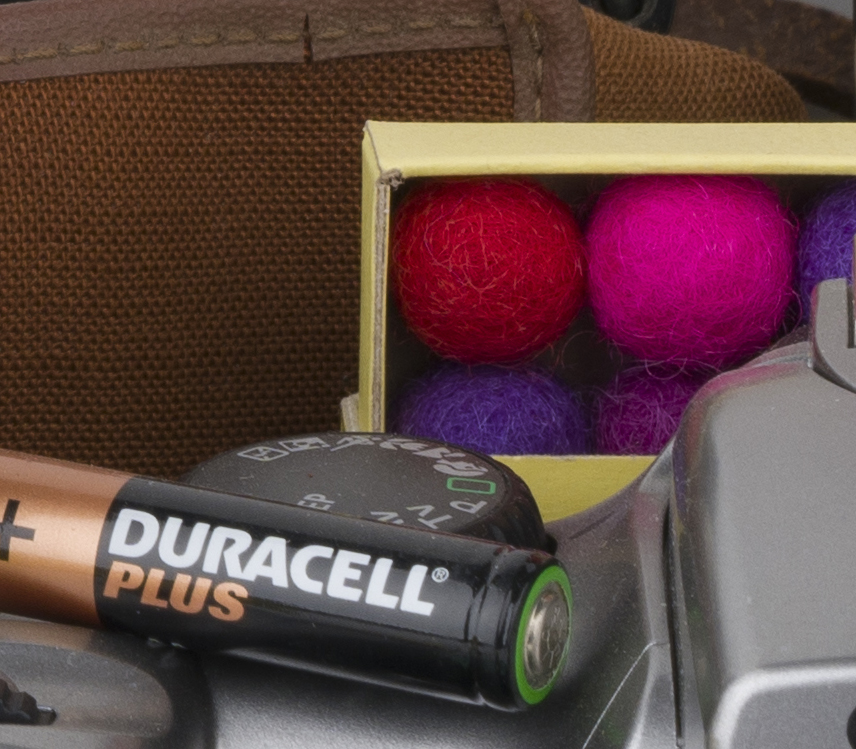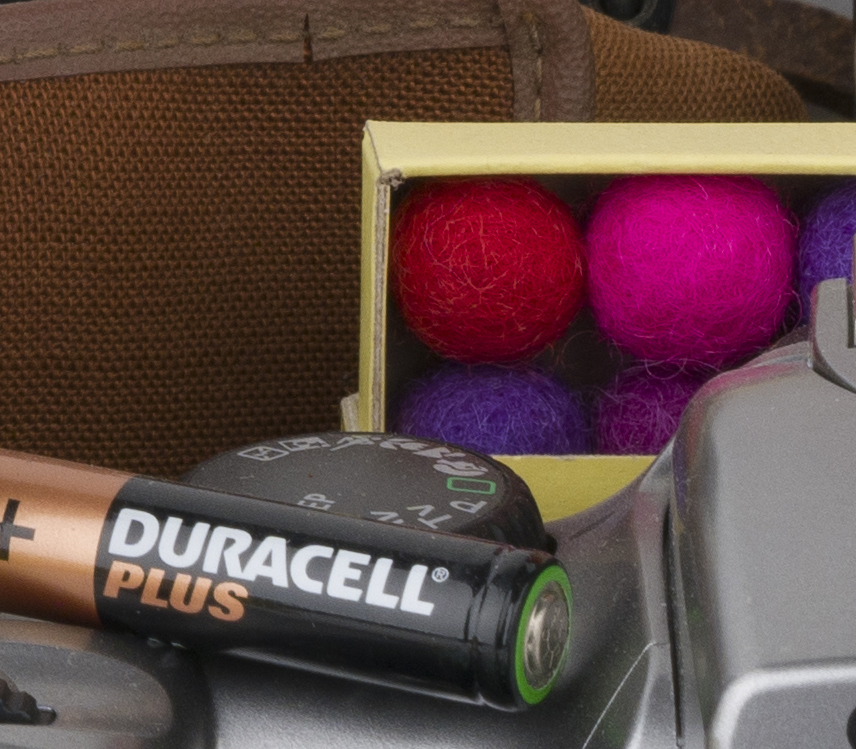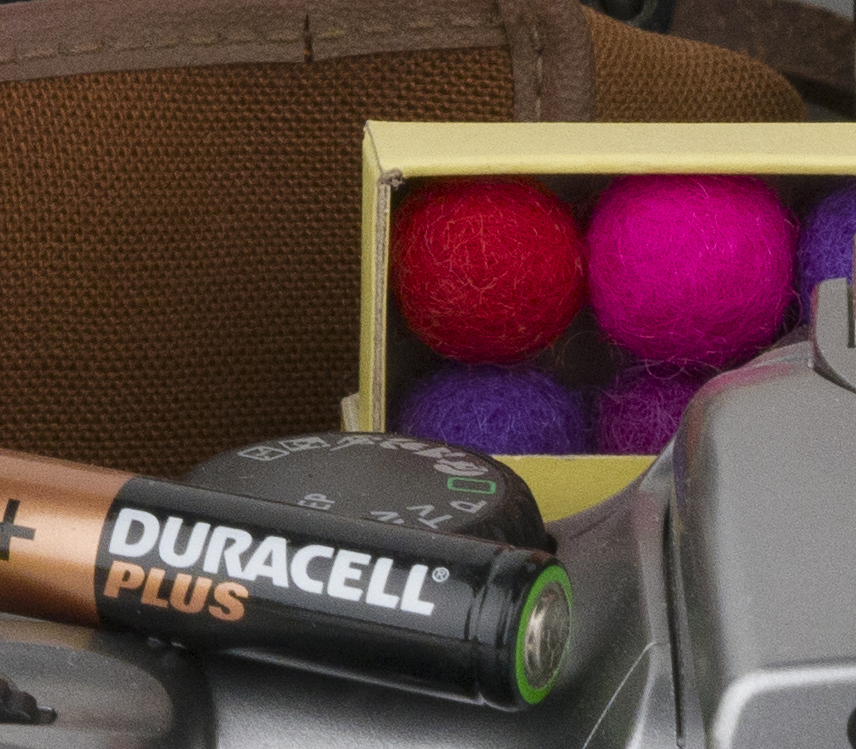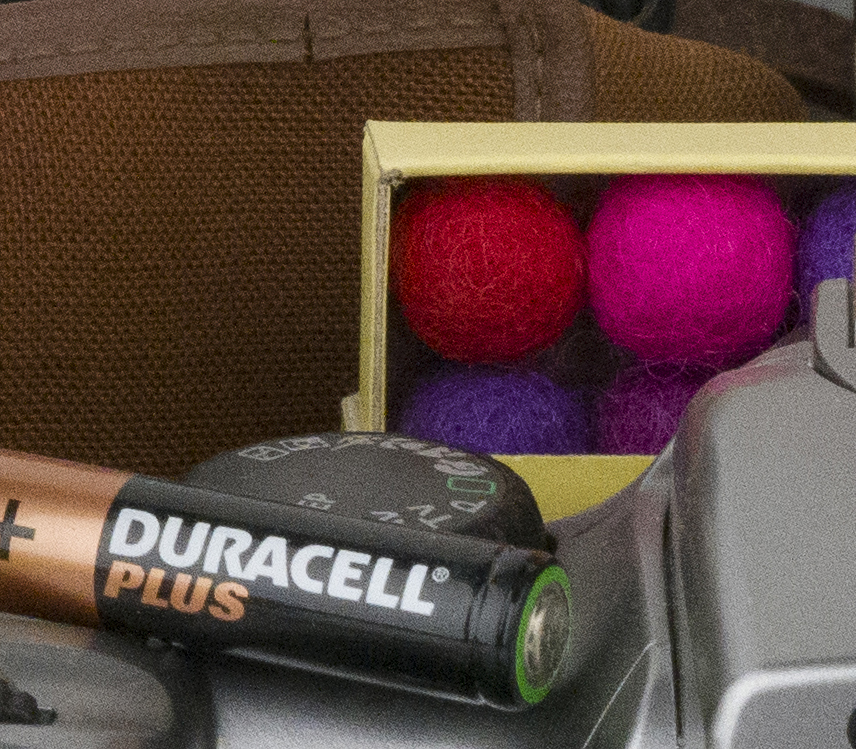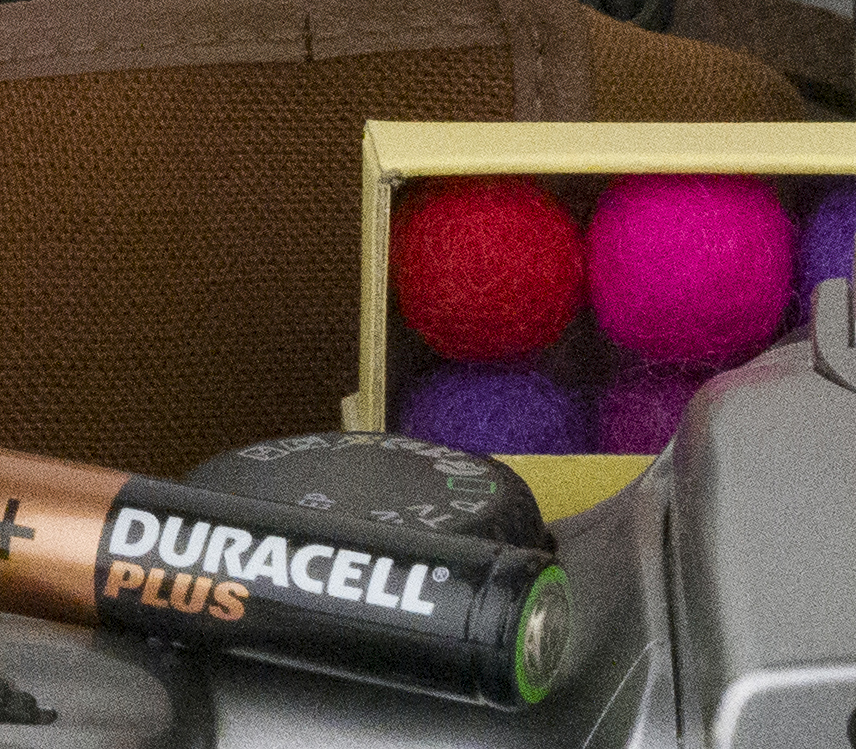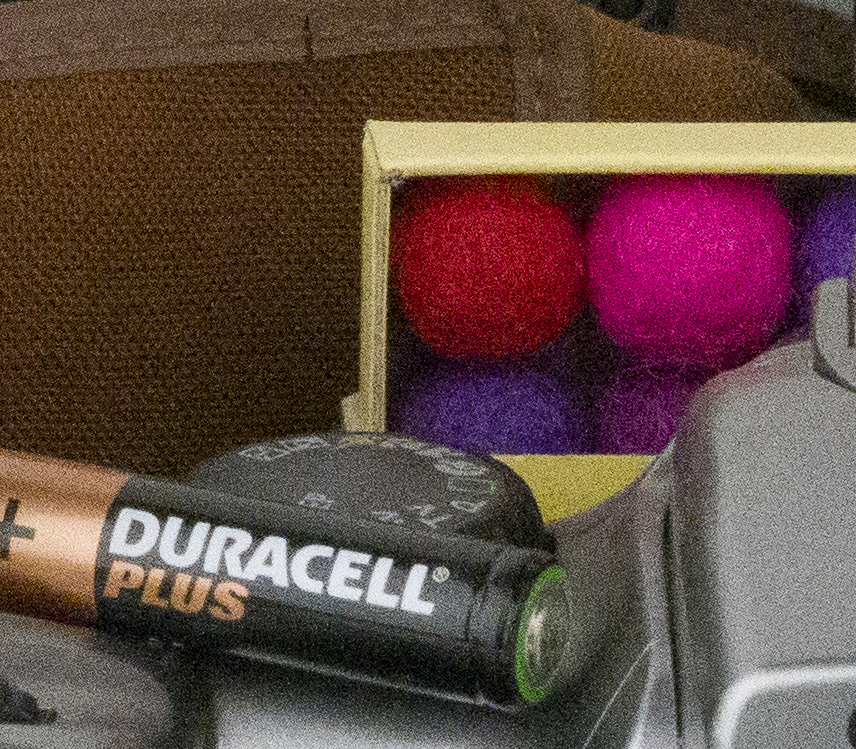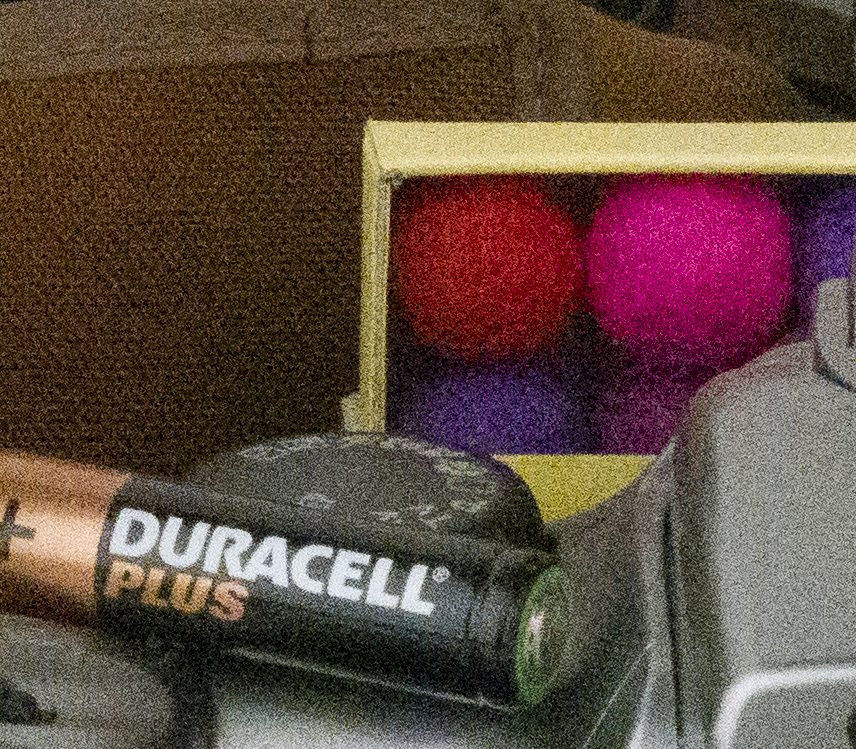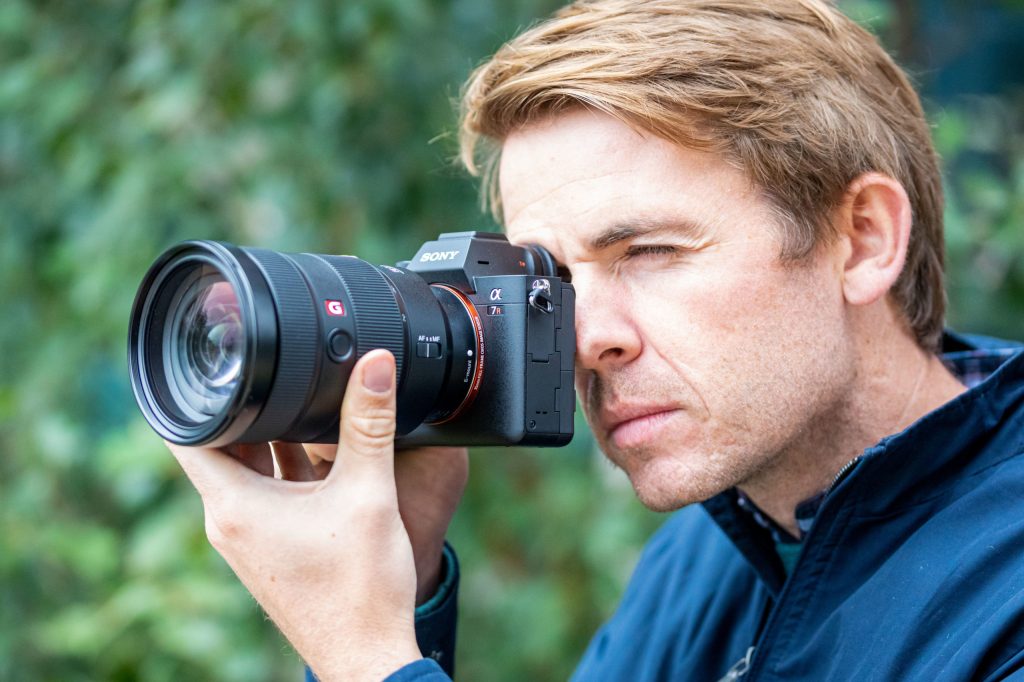Amateur Photographer verdict
The Sony Alpha A7R IV is an incredibly powerful mirrorless camera that set a new benchmark. The resolution may be overkill for many amateurs and enthusiasts.- 61MP full-frame sensor
- Wide dynamic range
- Weather sealed
- Huge RAW files
- Not fully articulating screen
- Limited touchscreen control
The Sony Alpha A7R IV may have been replaced by the A7R V on our list of the best mirrorless cameras but rest assured we still love and recommend this groundbreaking, superb camera for many reasons. Read on to discover them.
When it launched in 2019, the A7R IV became the fourth generation of Sony’s high-resolution A7R-series full-frame mirrorless cameras. We knew at their inception in 2013 that Sony’s A7-series cameras had great potential. We couldn’t have predicted how quickly the system would evolve. It drove a revolution in tempting photographers to ditch their DSLRs and switch to mirrorless for good.
At a glance:
- $2,500- $2,800 / £3,094 body only
- 61MP full-frame CMOS sensor
- ISO 100-32,000 (expandable to ISO 50-102,400)
- 10fps continuous shooting
- 5-axis in-body stabilisation
- 5.76-million-dot EVF
- 3in, 1.44-million-dot tilt-angle screen
- 4K/30fps video
Once 36-million-pixels were accepted as the norm for high-resolution full-frame cameras, Sony manufactured its second-generation model. The A7R II that made its debut in 2015 presented a ground breaking 42.4MP sensor, built-in 5-axis image stabilisation and an improved body design.
Two years later Sony revisited its A7R-series again. The A7R III upheld the same pixel count as its predecessor, but introduced many of the powerful features that originated in the Alpha 9. These additions made it one of the best all-rounders for resolution, speed and high ISO image quality that we have tested.
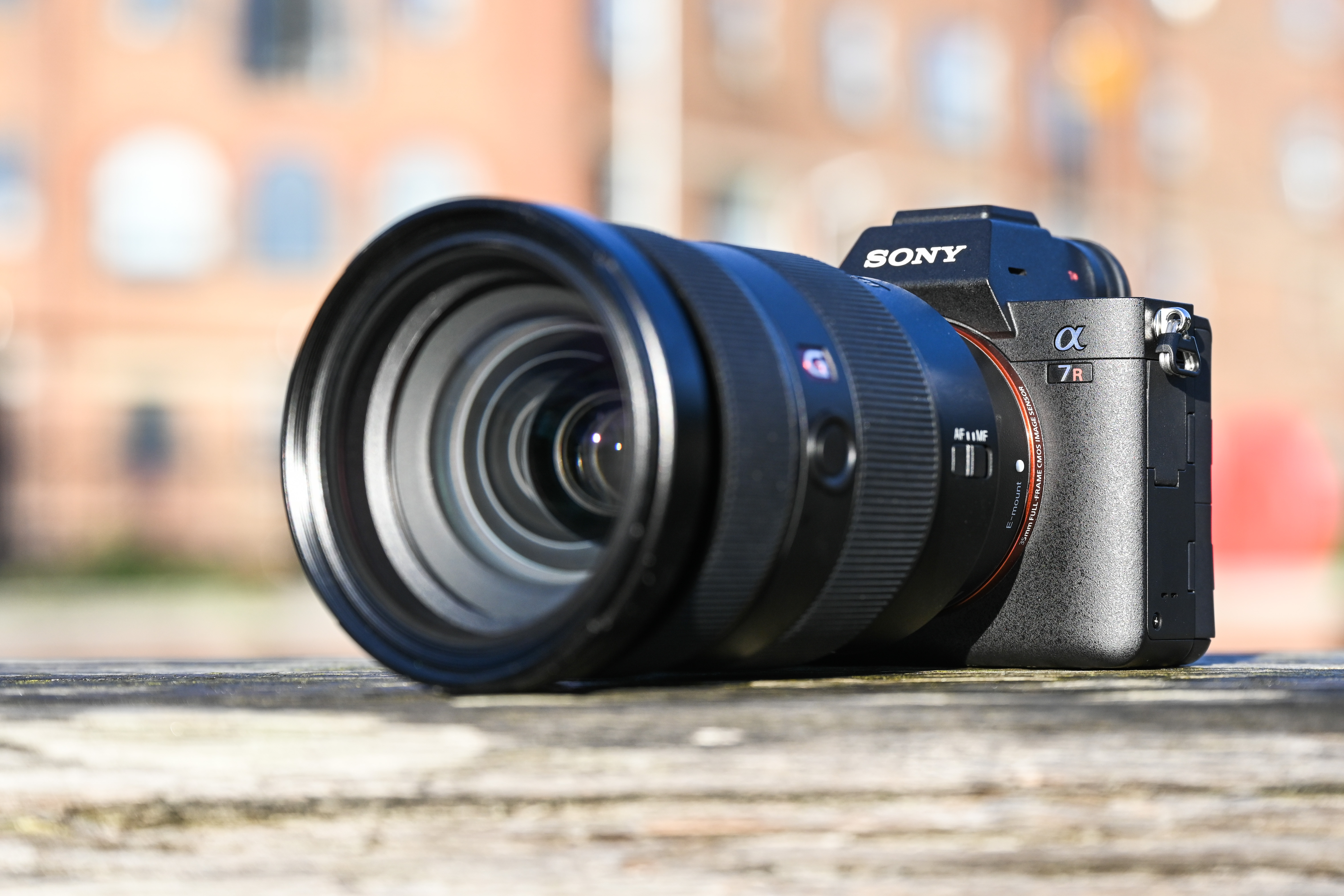
As you can see, Sony has a habit of setting new records for resolution with this series. With its 61-million pixel BSI full-frame sensor, the A7R IV became Sony’s highest resolution mirrorless camera to date. Technically, the camera retains that title to this day, as its replacement, the Sony A7R V announced in October 2022, uses the same sensor.
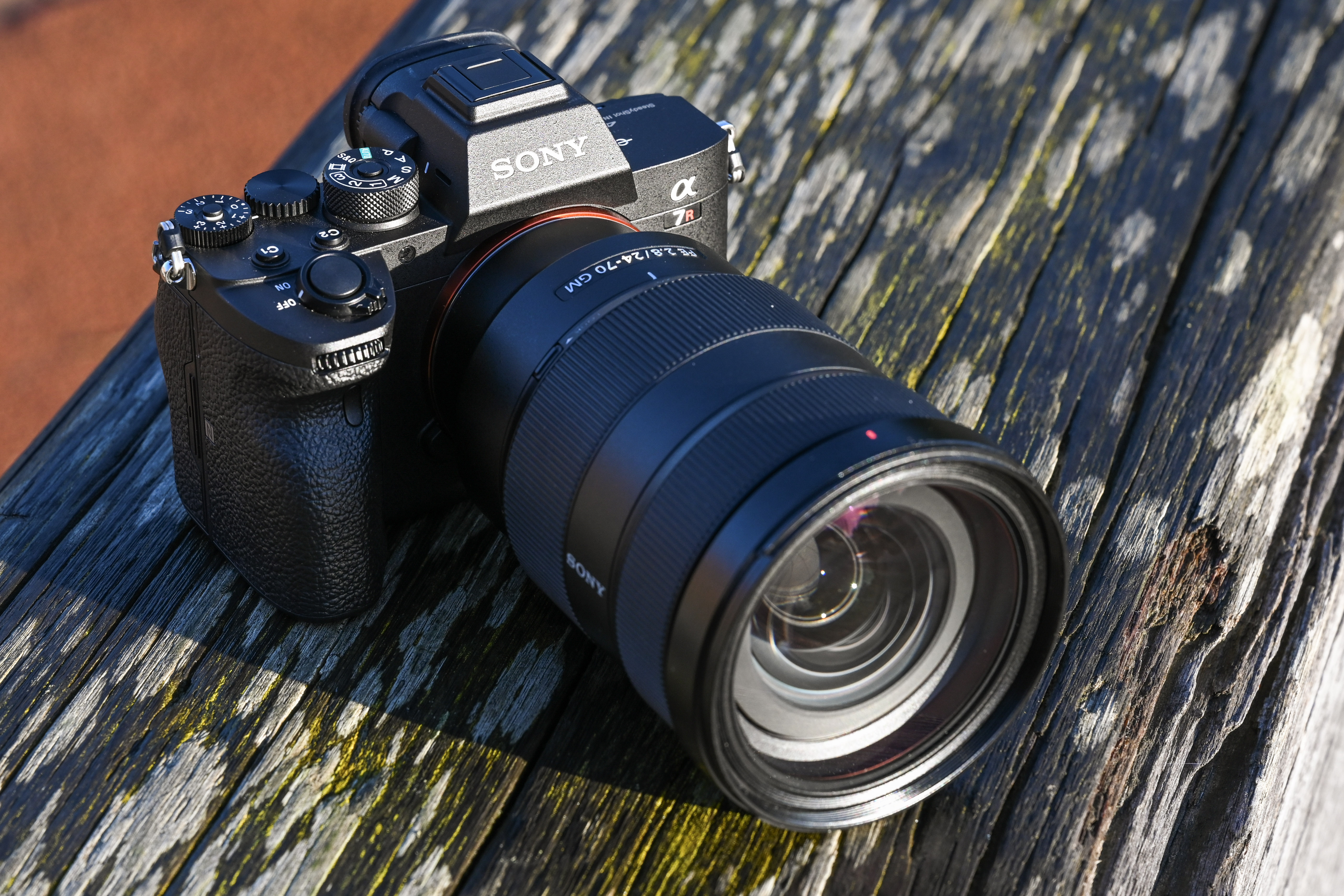
Sony are not ones to take their foot off the pedal. Absorbing feedback from existing A7R users, it made over 50 improvements to its new Alpha 7R IV.
At the time, the A7R IV boasted one of Sony’s most sophisticated autofocus systems to date. What’s more, it has a maximum continuous shooting rate of 10fps with continuous AF and exposure. Atypical for such a high-resolution camera.
The Alpha A7R IV also marked a break with its traditional design, as Sony made some changes to the controls and handling compared to its predecessors. The biggest of these was the addition of the multi-selector joystick, which is now a must-have feature for many photographers. We take a look at all of these features and more in our in-depth Sony Alpha A7R IV review.
For more options have a look at the best Sony cameras or our guide to the best full-frame camera.
Firmware Updates
The Sony Alpha A7R IV has had several firmware updates since its launch. These include significant AF enhancements, such as adding support for Real-time Eye AF(human, animal) and Real-time Tracking, wide-area focal plane phase-detection AF coverage and focal plane phase-detection AF, as well as AF and high-speed continuous shooting features.
A7R IV updates have also added support A-mount lenses via Sony’s A-mount adapter. You can find all of the Sony Alpha A7R IV firmware updates on Sony’s website.
Features
The A7R IV is the first camera to showcase a 61-million-pixel back-illuminated full-frame sensor, with on-chip phase detection for autofocus. This sensor partners up with Sony’s latest-generation BIONZ X image processor and front-end LSI, with the aim of delivering unprecedented resolution, fine gradation and a 15-stop dynamic range at the low end of its ISO 100-32,000 (expandable to ISO 50-102,400) range.
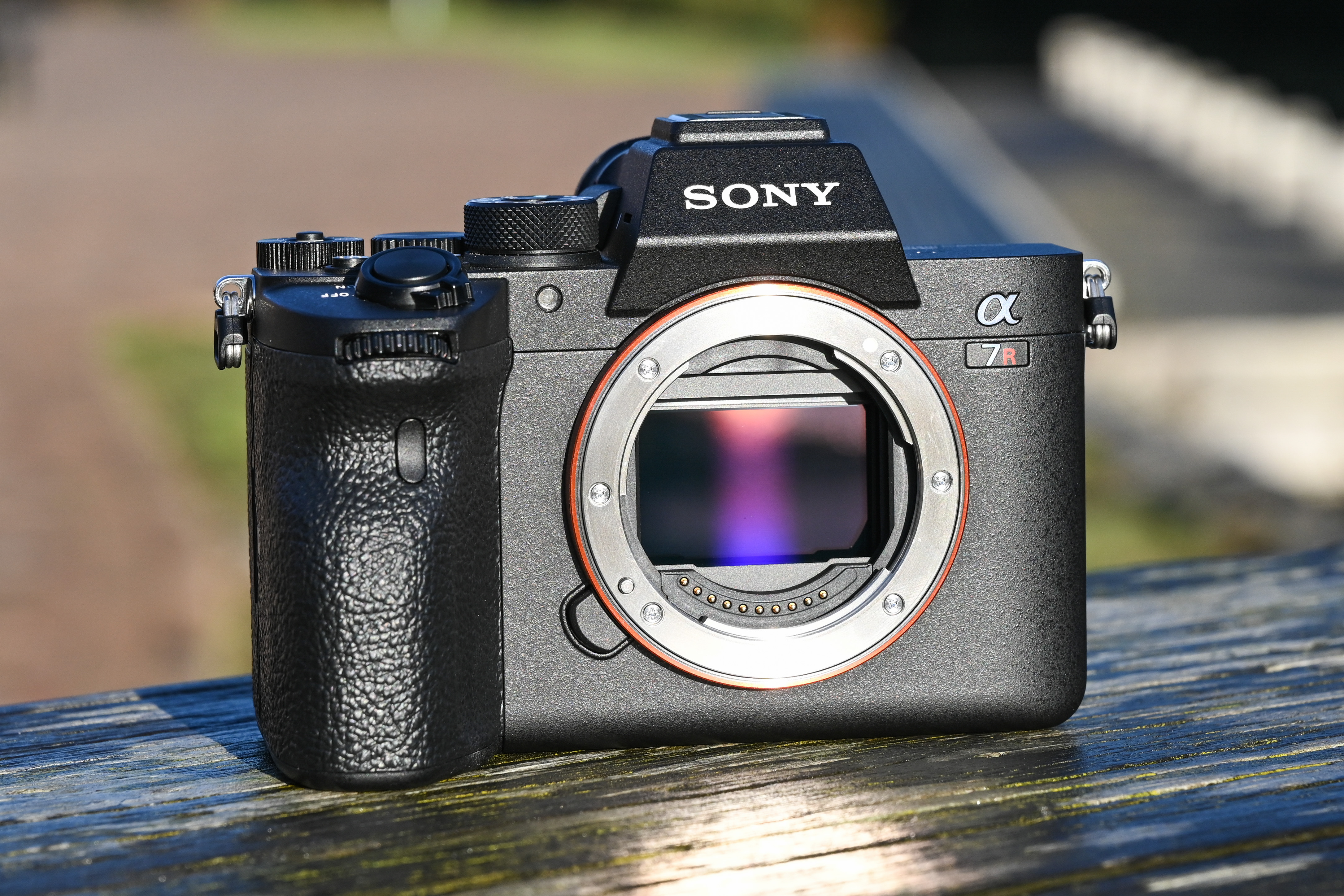
Despite an increase in resolution there’s no reduction in speed. It’ll happily shoot a continuous burst of 14-bit Raw files at 10fps for up to 7 seconds (up to 8fps in live-view continuous shooting mode) with full AF/AE tracking using its refined, low-vibration mechanical shutter or silent electronic shutter. Sony claims 68 images (Extra Fine JPEGs or compressed Raw files) can be shot in a single burst at 10fps, which increases to 200 when the A7R IV’s APS-C crop mode is used.
We’ve seen APS-C/Super 35mm modes on an A7-series cameras before, but the A7R IV’s increase in resolution means you get a very useful 26.2MP output after cropping a full-frame image down to APS-C size. What’s more, the autofocus points remain in the same position as they are for full frame, resulting in a healthy 99% coverage across virtually the entire frame.

Out of APS-C crop mode there are 567 phase-detection AF points covering 99.7% height and 74% width of the image area. These are assisted by 425 contrast-detection AF points – the same number as on the A7R III. Sony’s 4D focus technology is available for sports and action photographers who don’t want to lose sight of erratic subjects. It uses special algorithms to detect fast action and predict your subject’s next move without getting distracted by obstacles in the frame.
Sony’s Artificial Intelligence (AI) subject recognition technology also carries across, and for the first time on an A7-series model it can be used during recording video. You can select between animal or human Eye AF mode depending on your shooting situation, with precise focusing in low light down to -3EV.
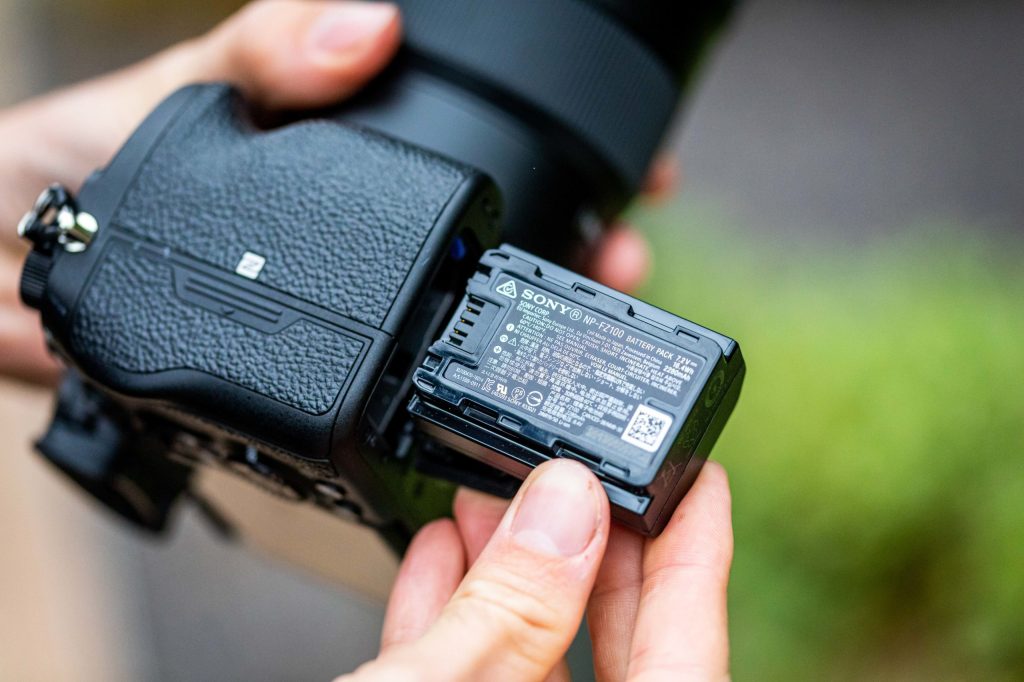
Another first is the A7R IV’s wireless PC remote connectivity, which now supports wireless tethering for better freedom in the studio or out on location. Transfer of large uncompressed Raw images has been made faster too with a new algorithm for wired PC remote shooting. On the topic of professional features, pros who need to promptly deliver their images will also value the support of FTP background transfer during and after shooting. In total up to nine FTP servers can be assigned in advance.
Another feature the camera inherits from the A7R III is its 5-axis, in-body image stabilisation. As well as compensating for the common pitch and yaw movements, it adds corrections for movements of the camera vertically and sideways, with the fifth axis corresponding to the rotational correction around the lens axis. This feature is crucial for movie shooting and ensuring high resolution handheld images remain pin sharp.
Impressively, it works with practically any lens and effectively allows users to shoot up to 5.5 stops slower than would otherwise be possible. Those who want to avoid shake caused by pressing the shutter button can trigger the camera wirelessly using a mobile device running Sony’s free Imaging Edge mobile app for Android and iOS. Alternatively, Sony’s RMT-P1BT wireless remote controller can be purchased for $78 / £65.
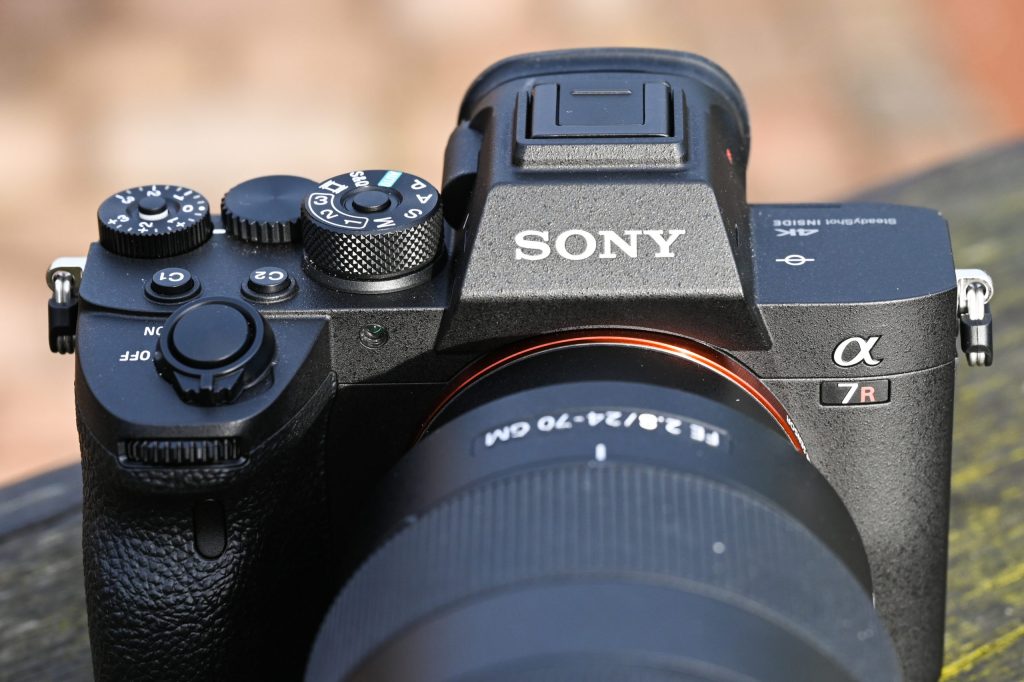
In addition to its impressive still image capabilities, the A7R IV offers a good, albeit not class-leading video spec. It provides 4K 30/24 fps video recording and full pixel readout without pixel binning in Super 35mm mode. Plus, it has S-Log 2 and S-Log 3 to maximise dynamic range and give videographers the control they need when colour grading during post processing. Full HD video at up to 120 fps is available too, although HDMI output is in 8-bit, and there is no internal 10-bit support.
Touch tracking AF during video capture allows users to pinpoint their subject to focus on by simply tapping the screen. Audio quality hasn’t been overlooked either. As well as providing microphone and headphone inputs, now located behind the same cover, Sony has developed a state-of-the-art ECM-B1M shotgun microphone. This connects via the camera’s Multi Interface Shoe. It has a digital signal processor (DSP) built-in for clearer sound recording and uses Sony’s noise-cancelling technology to rule out unwanted continuous noises.
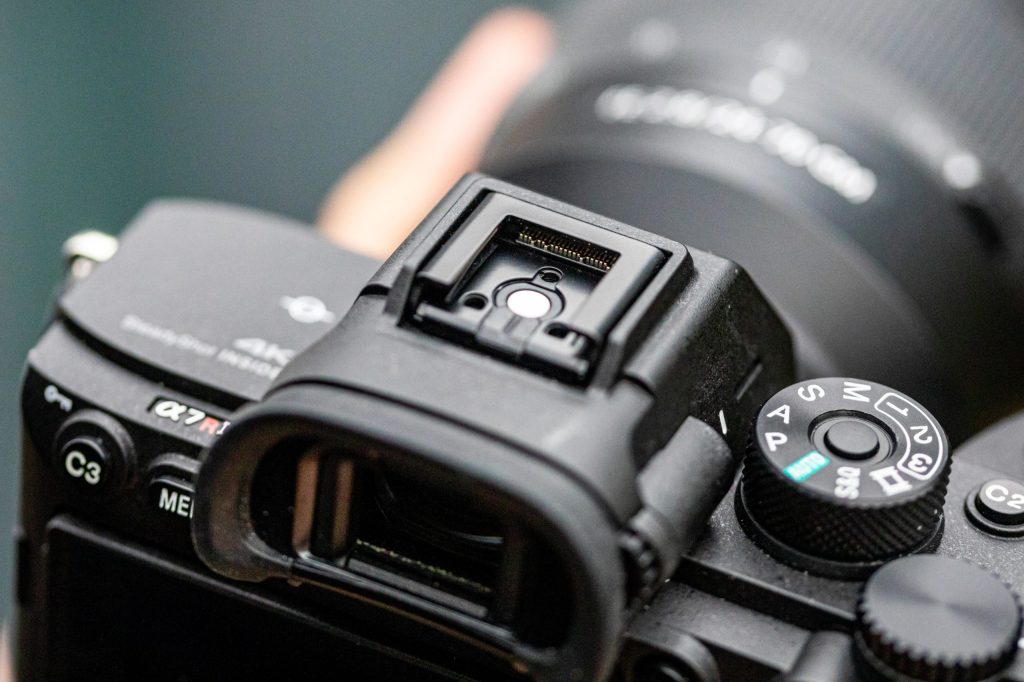
The Alpha A7R IV rounds off its comprehensive set of features with Wi-fi and Bluetooth connectivity. Transferring single images or multiple shots to your device requires a single press of the Fn button during playback and the high-speed USB-C port at the side supports in-camera charging of the NP-FZ100 battery. This is rated to last for approximately 650 shots using the screen, or 530 using the electronic viewfinder.
- Check out our guide to the best Sony E-mount lenses
Pixel Shift Multi Shooting
Just like the A7R III, the A7R IV features a Pixel Shift Multi Shooting mode. In this mode, the camera uses the image stabilisation system to precisely shift the sensor in 1 or 0.5-pixel increments between consecutive exposures. Uncompressed Raw and silent mode are automatically selected in Pixel Shift Multi shooting. After the raw files are written to the card, these can then be merged together on a computer running Sony’s Imaging Edge software to create one super high-resolution composite image.
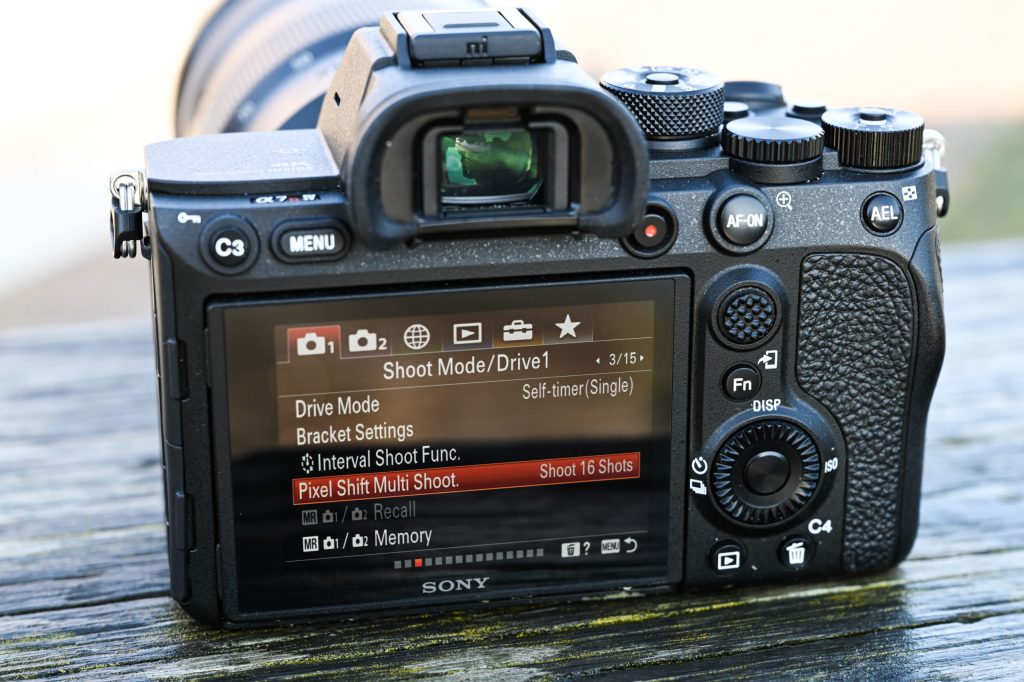
Whereas the A7R III previously allowed you to merge four frames of the same scene together, the A7R IV now allows you to capture up to 16 separate pixel-shifted images containing a total of 963.2-million-pixels worth of data. The final output is a colossal 240.8MP (19,008 x 12,672 pixel) image.
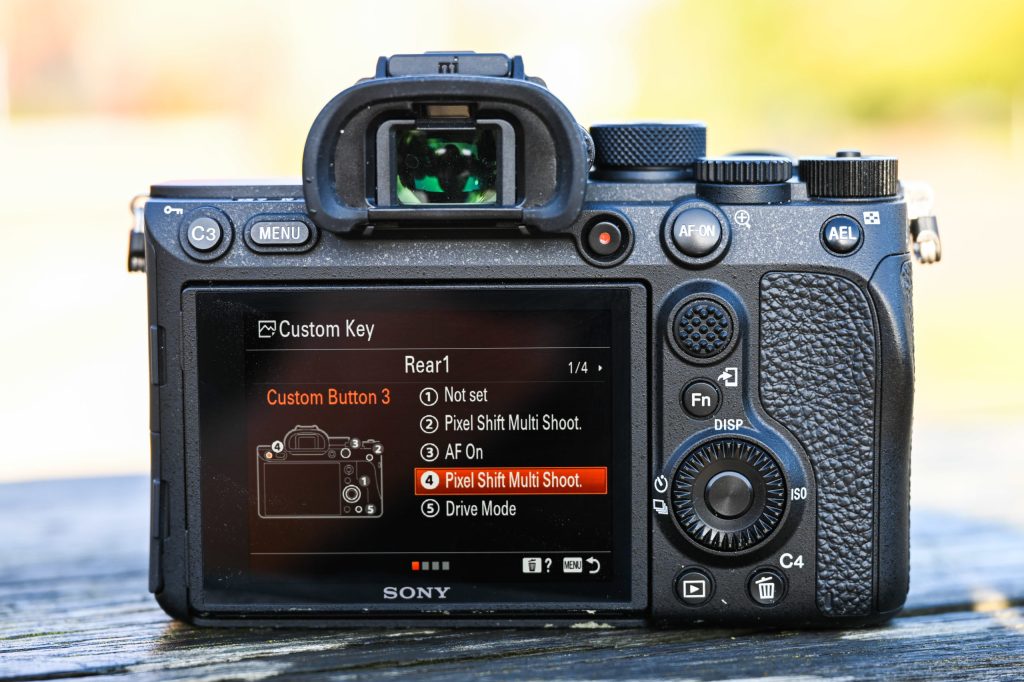
The caveat of Pixel Shift Multi shooting is the split-second delay between exposures. Against the stopwatch, it took 7.8secs to capture 16 separate pixel-shift images with a fast 1/500sec shutter speed. This isn’t an issue for static, motionless subjects such as architecture or studio still life setups. However, it can result in nasty artefacts appearing when shooting landscapes, seascapes or scenes where shrubbery, trees and water move.
It’s a similar story for other manufacturers pixel-shift modes – they’re good in certain scenarios, but worth avoiding if there is any sign of movement in the scene. Well, unless you’re prepared to carry out extensive post-processing work combining single-shot and multi-shot images together before masking away the unwanted artefacts.
Build & Handling
A number of the improvements that have been made to the Alpha A7R IV are based around the body. Its form factor might not look any different, but on close inspection, there are more changes than first meet the eye.
The handling of Sony’s A7-series cameras has come under scrutiny in the past. Sony has enlarged the handgrip to improve the experience for people with average sized or larger hands. This contributes to more of an assured feel than the A7R III when it’s coupled to large and heavy telephoto lenses, without being too bulky. I’d go as far as saying it’s the best feeling handgrip of any A7-series model Sony has made.
That said, as stressed when we reviewed the A7R III, the gap between handgrip and lens mount remains fairly tight. This isn’t an issue with bare hands or thin gloves. However, in colder climates where thick gloves are essential, it would be a struggle to squeeze fingers into the gap.
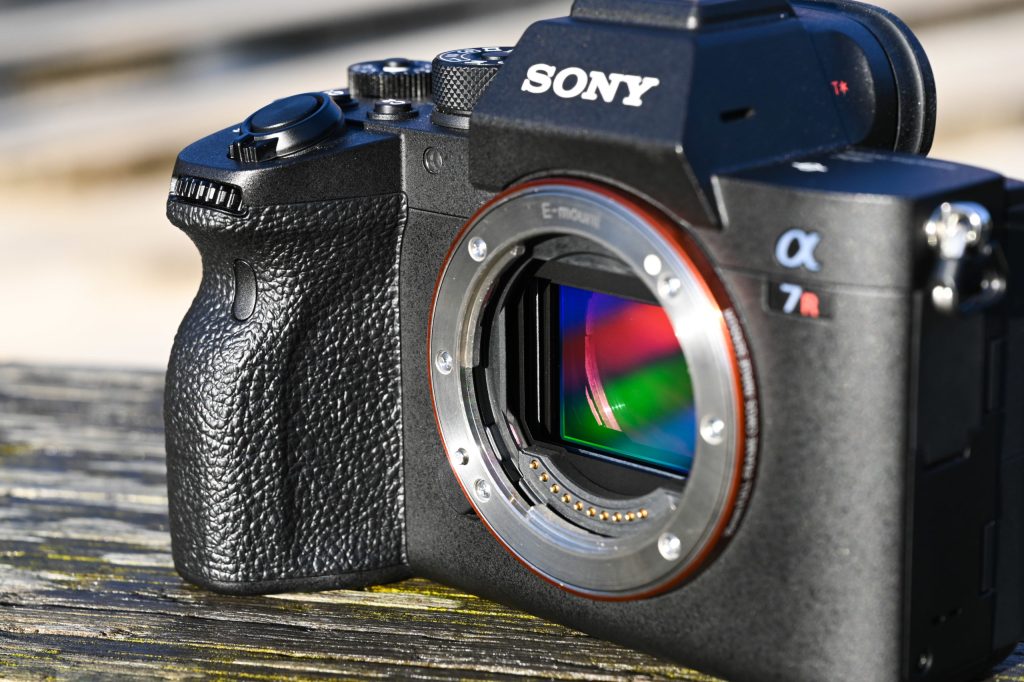
Another improvement is the sturdier, redesigned memory card door. As well as more durable, it’s less likely to be opened by mistake. Sony has moved slot 1 to the top and make both SD card slots UHS-II compatible. The two loaded cards can be configured as you like. You can backup files to each card simultaneously, record different file types to the two card slots, or tell the camera to switch across to the second card after the first card fills up.
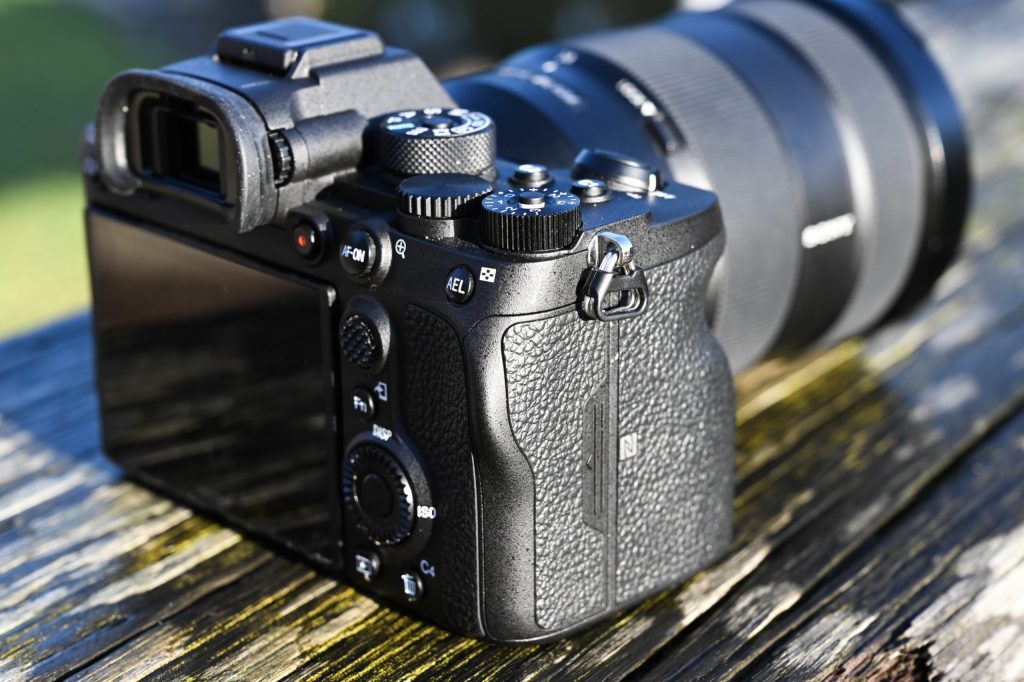
The redesigned A7R IV body makes it incompatible with existing battery grips. Those who’d like to double the battery life and improve handling in the portrait format are forced to buy Sony’s new VG-C4EM ($348 / £400). Unlike some grips that only accept one extra battery, this example accepts two NP-FZ100 batteries. It is made rigid and lightweight just like the body, which comes fortified by high-rigidity magnesium alloy covers and an internal frame. The question mark surrounding the plastic covers for the connector ports has finally been resolved too. These are now rubberised and offer far superior sealing in wet and damp conditions.

So, what about the rest of the A7R IV body? To answer the criticisms about the exposure compensation dial being easy to knock, a new lock has been added. It’s different to the mode dial lock that has to be pressed. Instead, it rotates and can be left unlocked or locked across its +/-3EV range. Up to +/-5EV control is available (0.3EV or 0.5EV steps) from the main menu, and this is easily assigned to a custom function button.
Other improvements on the top plate include a newly profiled On/Off switch that doesn’t feel quite as plasticky. The rear dial, previously embedded into the camera’s back, has shifted up onto the top plate for a better feel and response with your thumb. It operates very smoothly and rotates silently.
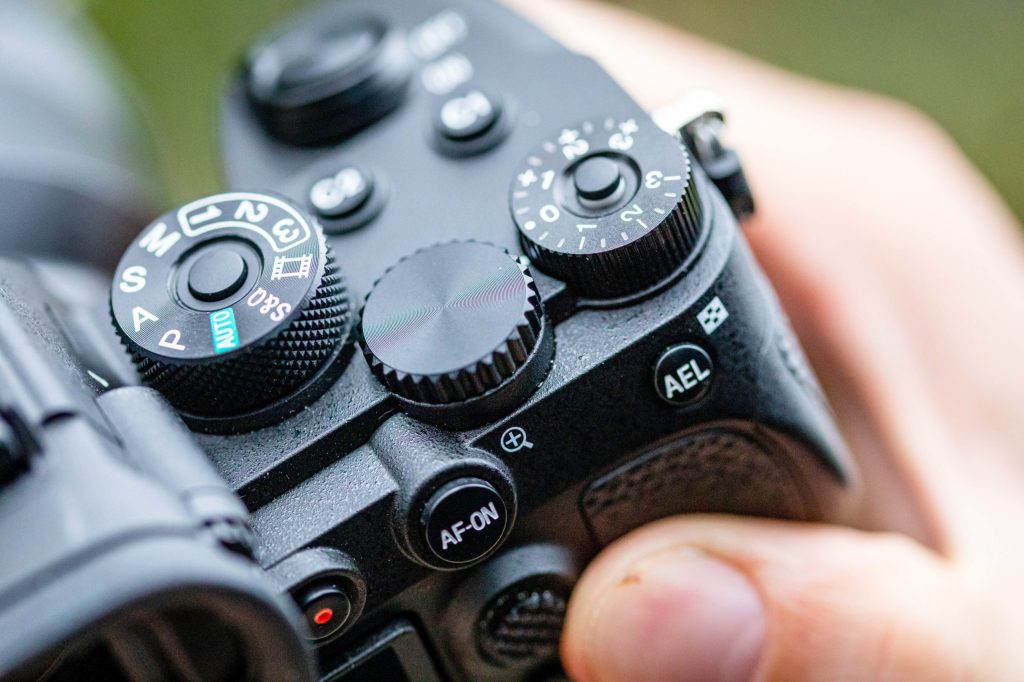
Shifting our attention to the rear, the AF-ON button is larger. The same can be said for the multi-selector (better known as the joystick), which has more dimples to improve grip and differentiate the feel from other buttons. I also found the buttons across the body to have a somewhat squishier feel, suggesting that many of them now offer improved weather resistance.

As to be expected from a camera designed for professional use, the A7R IV features weather–sealing in all the key areas to keep dust, dirt, sand and moisture from reaching the internals. That being said, Sony does say in the small print that the A7R IV is not guaranteed to be 100% dust and moisture-proof.
For those who don’t like how the A7R IV is setup out of the box, it can be customised well enough. There is the option to assign different functions to different buttons for shooting stills, video or reviewing in playback mode. The Function menu can be rearranged to your liking, as can the configuration of the front and rear dials when shooting in manual mode.
It has taken four generations, but with the A7R IV, there is the sense that Sony has got a lot closer to perfecting the build and handling of its A7-series. Picking up the A7R III after using the A7R IV does feel like a step back in time. Based on this, I wouldn’t be surprised if Sony perseveres with the larger grip and body refinements on the A7R IV and incorporates them in future A7-series models.
Viewfinder and Screen
Unlike the A7R III, which employs a 3.69-million-dot electronic viewfinder, the A7R IV is the first A7-series camera to sport a new and improved 5.76-million-dot UXGA OLED electronic viewfinder.

It’s the finest example of any EVF we’ve used on an A7-series model. It affords an impressive viewing experience with the advantage of being able to view exposure changes live as they’re made. Depending on your preference, it can be set to a display speed of 60fps or 120fps, with the latter rendering fast motion better at the expense of consuming a little more battery power.
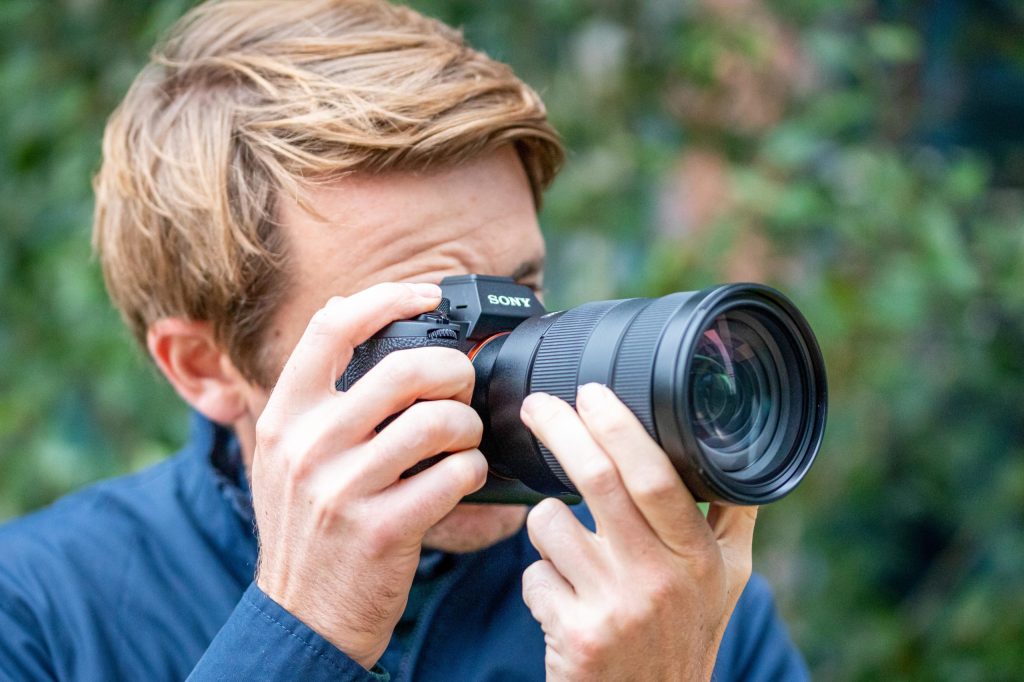
Below the EVF very little has changed. The A7R IV adopts the same 3in, 1.44-million-dot tilt-angle screen from the Sony A7R III. Once again Sony has persisted with it being tilt-only. Though it offers assistance with low and high-angled shooting in the landscape format, it doesn’t offer the same flexibility in the portrait format. It would have been great had Sony used the more manoeuvrable three-way tilt screen you find on cameras like the Panasonic Lumix S1/S1R and Fujifilm X-T3/X-T2.
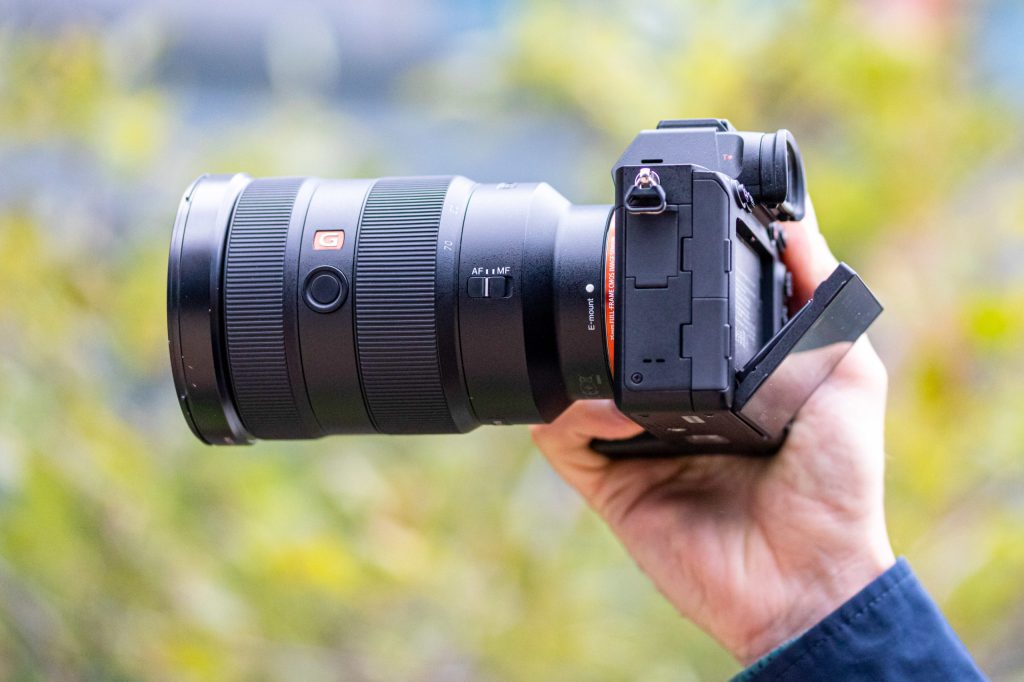
The focus point can be moved and magnified images examined in playback mode with a double tap of the area on the touchscreen. Handy enough, though other manufacturers provide more scope with theirs. The A7R IV menu cannot be navigated by touch, nor can you make exposure adjustments, select icons from the Fn Menu or swipe through images. Given how technologically advanced the A7R IV is in most other areas of its specification, the touchscreen control feels out of date. Sony may have offered a better screen on such a high-end model.
Performance
The image quality from the A7R III’s 42.4MP sensor was remarkable, but the 61MP images from of the A7R IV go one better. In our Sony A7R IV review, we found that the fine detail it resolves is phenomenal. For this, be aware that optical flaws and the slightest sign of camera shake will be evident. The good news is that the 5-axis image stabilisation is remarkably effective at ensuring the camera can be used handheld but, as a matter of principle, you should keep the shutter speed high when using the camera unsupported.
Dynamic range is astonishing at the low end of the ISO range too, with the ability to pull out immense detail from dark shadows without excessive noise creeping in. To prevent highlights being blown out in high-contrast scenes, such as in the image above, I opted to expose for the brighter parts in the scene and then process the raw file to lift the shadows and balance the exposure.
I couldn’t fault the metering system in use. It rarely misread a scene and much the same can be said for the auto white balance system. Colour is consistently faithful, resulting in images that appear neither too warm or too cool. If you end up shooting JPEGs more than you do Raws, you may wish to tweak the creative style settings. As an example, I preferred the look of monochrome images after upping the contrast to +2 in Black and White mode.
With each generation, we’ve seen the A7R get faster and more responsive. Once again, we’re not left disappointed by the focusing performance of the A7R IV. One area where it really excels is its AI-based real-time autofocus. Using it on a portrait shoot at the coast was a brilliant test and demonstrated how accurate it is at identifying a face within the frame. The smaller of the two green AF squares reveals which eye of your subject it has locked onto.
When shooting portraits with a shallow depth of field, you’ll likely want the camera to focus on the eye closest to the camera. More often than not the camera gets this right. If it selects the wrong eye or you have your own ideas, there’s the option to specify the eye to focus on from the AF2 menu settings. Out in the field, I was very impressed by the way it faultlessly switched between focusing on the subject’s face and eye, even managing to hold focus when the model looked down, or away from the camera.
The same could be said when I attempted photographing a few dogs at a local fair after changing the subject detection from human to animal. Those who shoot pets or animals on safari using telephoto lenses will find animal Eye AF extremely useful. My only criticism, which was also mentioned in our recent Sony Cyber-shot RX100 VII review, is that animal Eye AF can’t be combined with focus tracking like it can when subject detection is set to humans.

As usual from Sony, you get an array of focus area modes to choose from. In Wide mode, the camera attempts to identify the subject wherever it may be in the frame, with Zone restricting it to a smaller area. In Flexible Spot mode, you can position the focus point manually almost anywhere in the frame using the joystick and with Expand Flexible Spot, surrounding focus points are used to assist the camera in focusing.
Continuous focusing on fast-moving subjects is very hasty. It seemed untroubled when I asked it to keep focus on a group of cyclists traveling towards the camera at speed. Although the hit rate of sharp shots in a burst might not be quite as high as you’d get on the sports and action-focused Alpha 9, you can’t really fault the speed at which the A7R IV keeps up with subjects that move.
We’ve become used to the dull mid-grey of the focus area, and its elusive AF point at low subject contrast. Sony has finally provided a solution to this – users will welcome the option to change the focus frame colour to white or red instead. Although listed as a minor improvement among the changes made, this a subtle addition that will make a big difference to enthusiasts. It also shows that Sony listens to feedback.
The increased resolution demands much more of the A7R IV’s imaging processor in order to keep up, which it does remarkably well. Loaded with a 64GB SDXC UHS II Class 10 card, it had no trouble recording 70 compressed raw files or 31 uncompressed raw files to the card at 10fps before the buffer was hit. Repeating this test after I’d changed the file format to Extra Fine JPEG, resulted in 70 frames being recorded at 10fps – a high number that’ll allow sport, action and wildlife shooters to keep firing without worry of their burst being interrupted.
A drawback of the large pixel count and high-resolution output is that memory cards do fill up quickly. For this Sony A7R IV review, I shot 418 Uncompressed Raw & Extra Fine JPEG images before it spilt over to using the second card in slot 2. Additionally, the large 123MB (uncompressed) and 61MB (compressed) .ARW raw files demand a lot of processing power from your computer. My 2017 2.5 GHz Intel Core i7 Macbook Pro didn’t struggle to process the files, however my 2010 3.2 GHz Intel Core I3 iMac slowed to a snails pace when editing the files in Adobe Lightroom.
There’s the issue of storage to factor in too. Shoot Raw files day in, day out with the A7R IV and it’ll culminate in your hard drive or cloud storage being quickly filled. If you don’t already have a suitable computer/storage system to deal with exceedingly high-resolution images, the A7R IV could require you to spend much more than the price of the body alone.
Image Quality
The A7R IV’s new sensor has got a lot of photographers excited about what we can expect from the next wave of high-resolution full frame cameras. As we’d predicted, the lab results from our Sony A7R IV review are the best we’ve ever recorded from a high-resolution full-frame chip.
Its 9504×6336-pixel count equates to a 31.6×21.1in or 80.4×53.6cm print at a critically sharp 300ppi output resolution. Even when you crop down to APS-C mode, you can still capture 6240 x 4160 pixel files that measure 20.8×13.8in (52.8×35.2cm). The APS-C crop mode will be appreciated by animal photographers who typically rely on cropping after capturing images of quickly moving animals/birds afar.
Resolution
Looking at raw files processed using Adobe Camera Raw, its evident that the A7R IV captures mesmerising detail from its 61.0MP sensor, which forgoes an optical low-pass filter (OPLF). At ISO 100, the sensor achieves approximately 5,400lines per picture height, which exceeds all figures we’ve previously recorded by other high-resolution full-frame mirrorless cameras. Resolution gradually drops off as the ISO is increased, with 5,000l/ph being measured at ISO 800 and 4,600l/ph at ISO 6400. As expected, the level of detail beyond this point starts to reduce as the influence of noise becomes more prominent. That being said, it still manages a staggering result of 4,400l/ph at ISO 12,800 and 4,000l/ph at ISO 51,200.
From the crops below, multiply the number below the lines by 400 to calculate the resolution on lines per picture height. These were shot with an E-mount version of the Sigma 85mm F1.4 DG HSM Art.
Noise
The high ISO performance of Sony’s high-resolution sensors these last few years has been astonishing. The A7R IV continues this trend. Opening raw files in Adobe Camera Raw and examining them at 100% tells us clean, noise-free images are produced between ISO 100 and ISO 1600. Noise starts to creep in at ISO 3200 and ISO 6400, but it’s so negligible and inoffensive it won’t stop you using these settings. I found acceptable results with ISO 12,800 and ISO 25,600 too. However, you will find yourself wanting to apply a little noise reduction during post processing. Colour remains well saturated and punchy between ISO 50 and ISO 12,800, with a hint of a green tinge creeping in at ISO 25,600 and above. The upper ISO 51,200 and ISO 104,200 settings might sound good, but give these a wide berth as the image quality visibly degrades.
Verdict
The Sony A7R IV is the new master of resolution in the full-frame market. By developing the world’s first 61MP full-frame sensor, Sony has taken image quality to new heights without making a compromise on speed. The fine detail it resolves in its files is astonishing and so is the performance at high ISO. Then, there’s the wide dynamic range offering great latitude from its raw files. The option to switch over to APS-C mode from the touch of a button instantly transforms it into an accomplished camera for sport, action or wildlife.
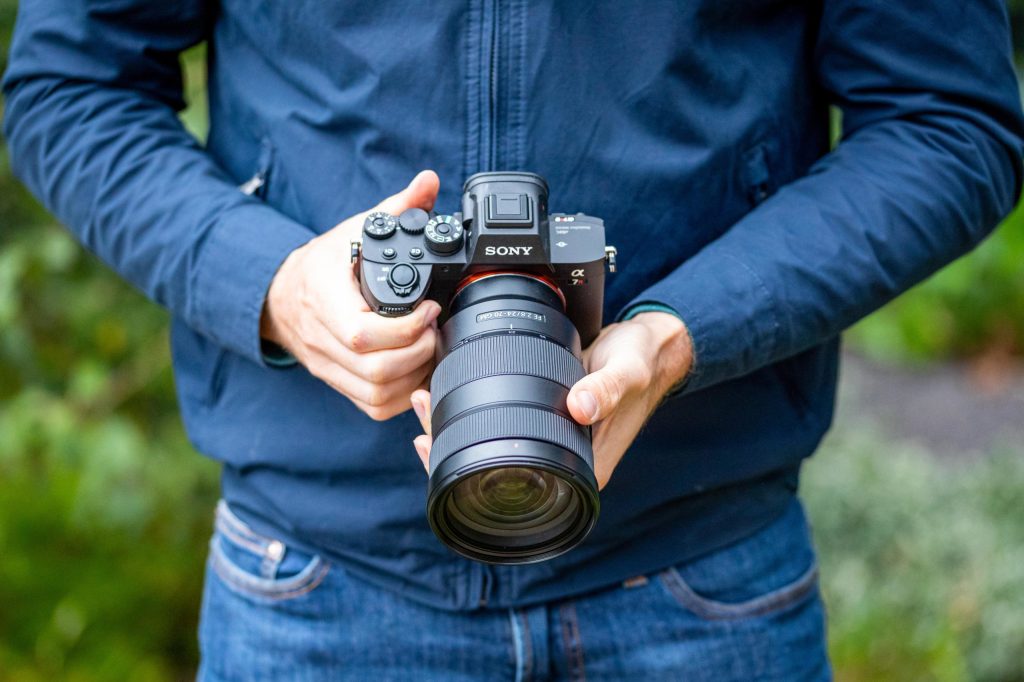
It’s great to see Sony addressing some of the comments we made in our Sony A7R III review, with its larger handgrip, weather seals and subtle changes to buttons and dials further improving its build and handling. Other advancements such as the improved phase-detection AF coverage, the option to change the focus frame colour, and ability to use Sony’s fabulous Real-time Eye/Animal AF focusing during video recording are all well received.
All of the above is very complimentary, but there are still a few quibbles. The huge raw files have a big effect on storage, so be prepared for memory cards and external hard drives to fill up quickly. There’s the processing power of your computer to think about, too. It needs to be speedy if you’d like to turnaround images fast and avoid frustrating delays during post-processing. I’d like to see Sony take a leaf out of Canon’s book and develop a sensible raw compression for its Raw files. It would help save valuable memory card and disk space without a noticeable impact on image quality.
The excellent electronic viewfinder and effective 5-axis in-body stabilisation are great to have. However, it’s a shame they’re not supported by a better screen that allows you to tilt it for low/high portrait shooting. The touchscreen control is limited and the menu system convoluted. The menu consists of 197 options across six pages. Settings are consequently hard to find in a hurry, especially if you’re new to an A7-series camera. These are two areas we’d like to see Sony improve its high-resolution marvel in the future.
To sum up our review, the Sony Alpha A7R IV is an incredibly powerful mirrorless camera that sets a new benchmark. The resolution will be overkill for many amateurs and enthusiasts. In contrast, pros, commercial photographers and those who regularly shoot high-resolution images for stock agencies will be sorely tempted.
To answer my earlier question; Sony has successfully created one of the finest high-resolution full-frame mirrorless offerings on the market. It’s not perfect in every way, but is up there as one of best mirrorless cameras money can buy and has seriously impressed us on test.
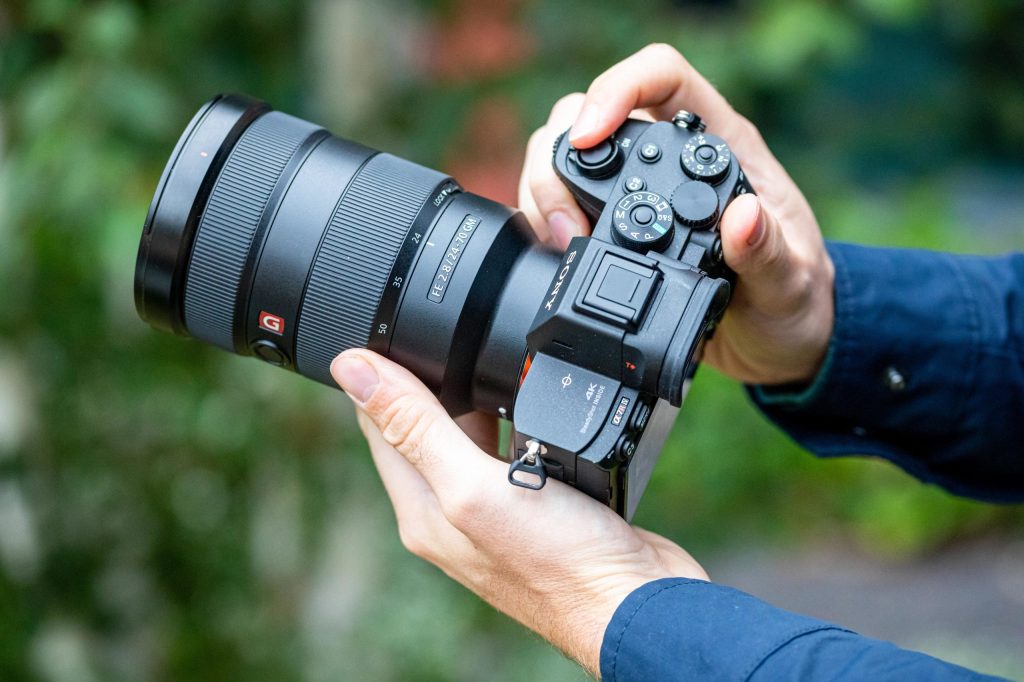

Further reading:
- Best Sony cameras
- The best Sony E-mount lenses
- Sony Alpha A7R V versus A7IV
- Switching from Canon to Sony A7R IV

